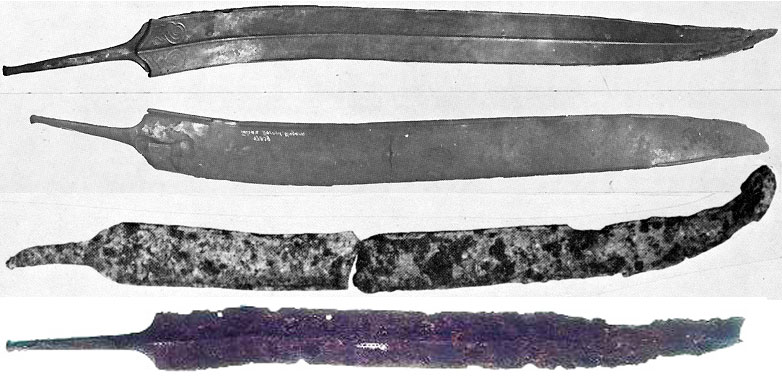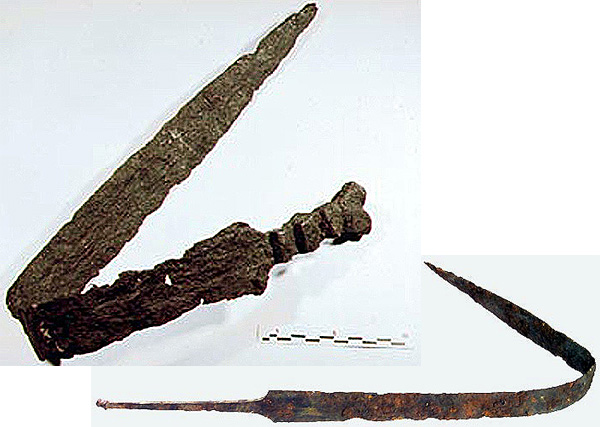JM Navarro published pictures of a couple of LaTene blades that were curved in his report on the finds at LaTene...
These curved LaTene swords look almost like a hybrid between the LaTene blade and the Falcata.
I thought they were probably interesting anomalies or either were bent during their stay underground.
(For instance with such a close fitting scabbard on a curved blade how would they ever extract the sword,
unless it opened up at a seam). However I have recently discovered what may be another curved LaTene blade
found in England (published on the Museum of London website). So I thought I would post the pictures
and see what you thought of them. If they were made with curved blades they are really quite graceful IMO.
And they certainly resonate with the Celt's love of curves.
ks

Straight LaTene Blade Top
Curved Falcata Bottom
Curved LaTene in the middle

Top 2 Front and Back Continental find 75cm TL
Third from Top from Austria 80cm TL
Bottom from Thames at Hammersmith 35cm TL

